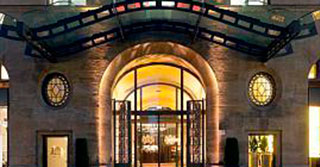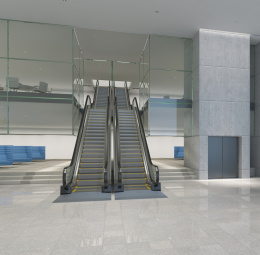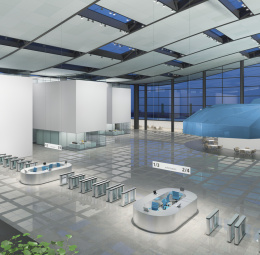Designing the first impression with light
Light defines contact points, such as countertop slab and info counters in space, to manage visitor circulation. The retina is attracted to a lighter level than the atmosphere. The objective of lighting in the receiving areas of social building structures is to illustrate a welcome and valuable picture.
Creating a uniform background with light
Reception areas benefit from a bright, welcoming background created by rear walls illuminated by wall washers. Lens wall washers are used as contoured luminaires in the architectural example, lighting high walls uniformly and effectively. Logos, posters, and signs should be used to turn light-filled walls into information carriers. The vertical lighting heightens the impression of the area. It is used to distinguish path directions in the building and is used in the back room sections.
Accenting objects with light
Accent lighting is often used in perception-oriented lighting design to establish structures in the space and direct the vision. This makes it easier for people and tourists to find their way around the venue. The effects of such a lighting technique are enhanced by precisely defined light sources such as recessed light bulbs at the edge of the field of outlook.







